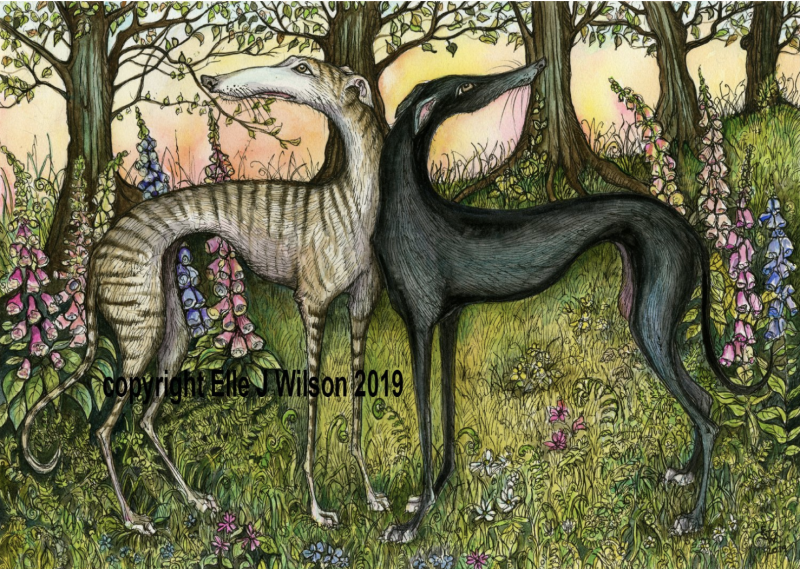
If you are a fancier, do you remember when the world of dog shows was new to you?
We do. As newbies all those years ago, we sometimes stood ringside next to other exhibitors and/or breeders who helped answer our questions, and we had many.
Casual ringside instruction on how to find the best dog in the ring can be helpful, but in hindsight, it can also be fraught with generalizations that minimize the complexity of how a dog is built. Among the sweeping statements we got as first-timers was this one: “The longer the neck, the better the front.”
It’s not that simple. And at this point, you should ask a very pertinent question. We’ll give you until the end to figure out what that question should be.
An old adage among preservation/heritage breeders is that a “good” front is hard to get and easy to lose. This is probably because good front structure on a dog is complex, a symphony of bone structure, angulation, and muscle development. Neck length doesn’t make a good front, but in certain breeds, it can be a “symptom” of one.
A neck that appears to be short, out of proportion, and lacking in elegance is, in some breeds, a neck that is usually set into steep shoulders which tend to lack reach, and thus are inefficient in a working dog. In that regard, the “truisim” we’d been told all those years ago rings true. The Belgian Malinois breed standard, for instance, stipulates that the neck is “slightly elongated.” The Scottish Deerhound should have a neck that is “long, well arched, very strong with prominent nape.” The neck of an English Foxhound “must be long and clean.” A “long, tapering neck” is part of the Bedlington Terrier’s AKC breed standard.
But before you think that a long neck is appropriate for all breeds, think again: The Tibetan Spaniel’s standard calls for a neck that is “moderately short, strong and well set on.” A Brittany should have a “medium length” neck, and in the Siberian Husky standard, a neck that is “….too long” is a fault.
Some breed standards are helpfully specific about neck length. The Black Russian Terrier’s standard writes: “The length of the neck and the length of the head should be approximately the same.”
But other standards provide wording that may be a bit subjective. The Shetland Sheepdog standard states that the neck “should be muscular, arched, and of sufficient length to carry the head proudly.” In a Labrador Retriever, the “neck should be of proper length to allow the dog to retrieve game easily.”
What exactly is sufficient or proper length?
Again, it depends upon the breed and its function. A long, thin neck can fail to support and stabilize a dog during a retrieve, let alone have the strength to carry something heavy like a Canada Goose that can weight up to fourteen pounds. A short neck can punish a dog by preventing the full use of its head as a counterbalance which can inhibit the dog’s mobility and functionality when walking, running, and coming down a flight of stairs. Too long or too short, and the wrong neck length for the breed can negatively impact the lift and reach of the dog’s front legs. Why? Because a neck of good length (which is to say appropriate for the breed) provides length to the muscle that extends from the dog’s head to its upper arm, and that improves the rotation and motion of the front leg assembly. Breeds built for speed – say, sighthounds – tend to have long necks (and heads, for that matter), while breeds built for endurance tend to have medium length necks. In breeds calling for a good length of neck, one that is too short may cause the dog to lower their head which in turn, may cause the dog to roach its back.
We hope you’ve gotten a sense that everything to this point has been a “general” rule of thumb, and that by now, you realize that the first question you should have asked after reading about “the longer the neck, the better the front” advice we got was this: What breed were you watching when you got that advice?
Know your breed’s standard. Find out what the appropriate neck length is, and then start investigating why that particular length of neck is appropriate for that breed.
Image: “Never a day goes by…” Greyhounds by Elle J Wilson appears with her kind consent
https://www.almostanangel66.com/artworksforsale
www.etsy.com/shop/AlmostAnAngel66
